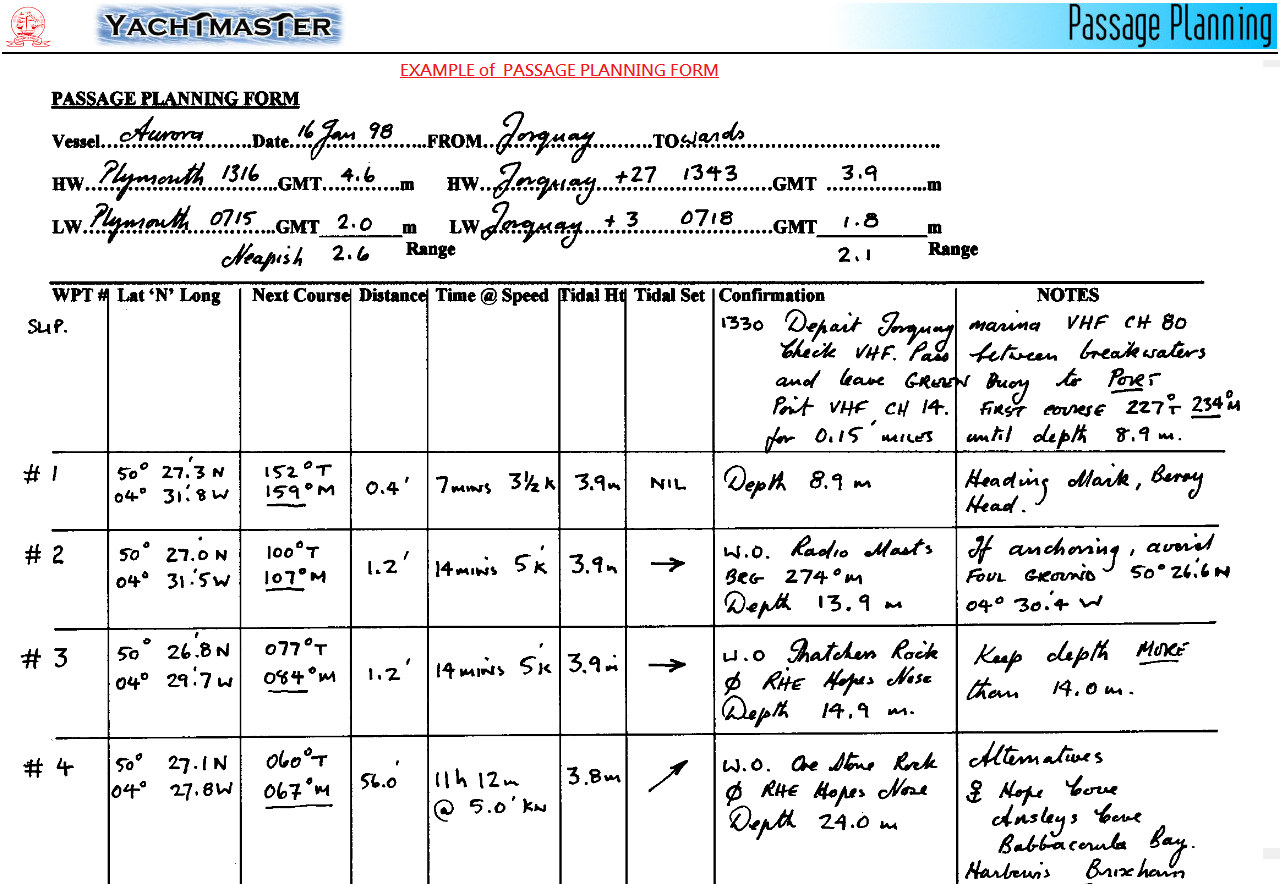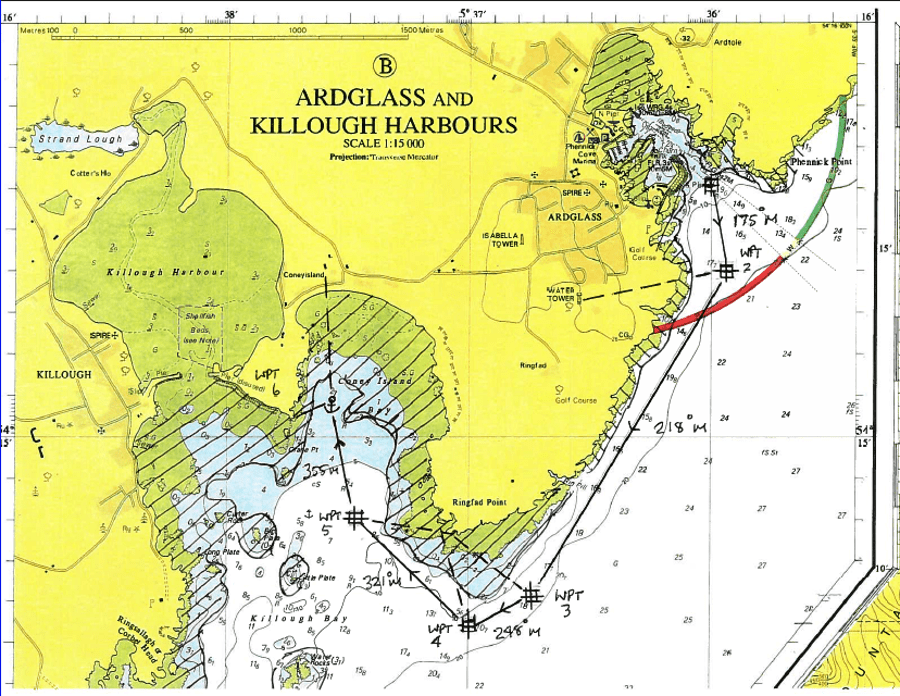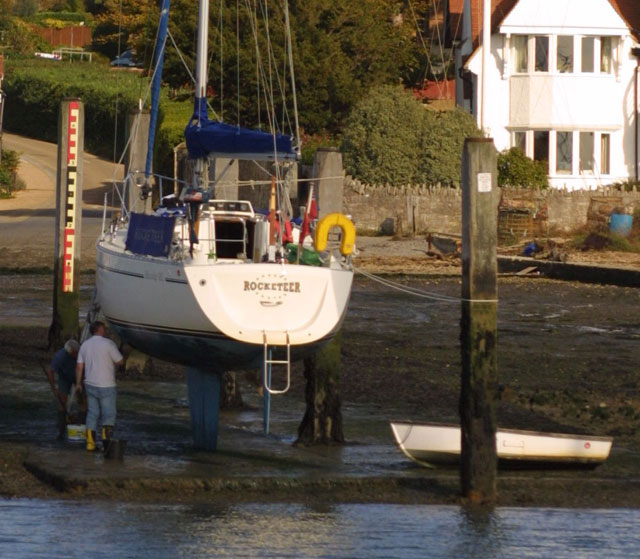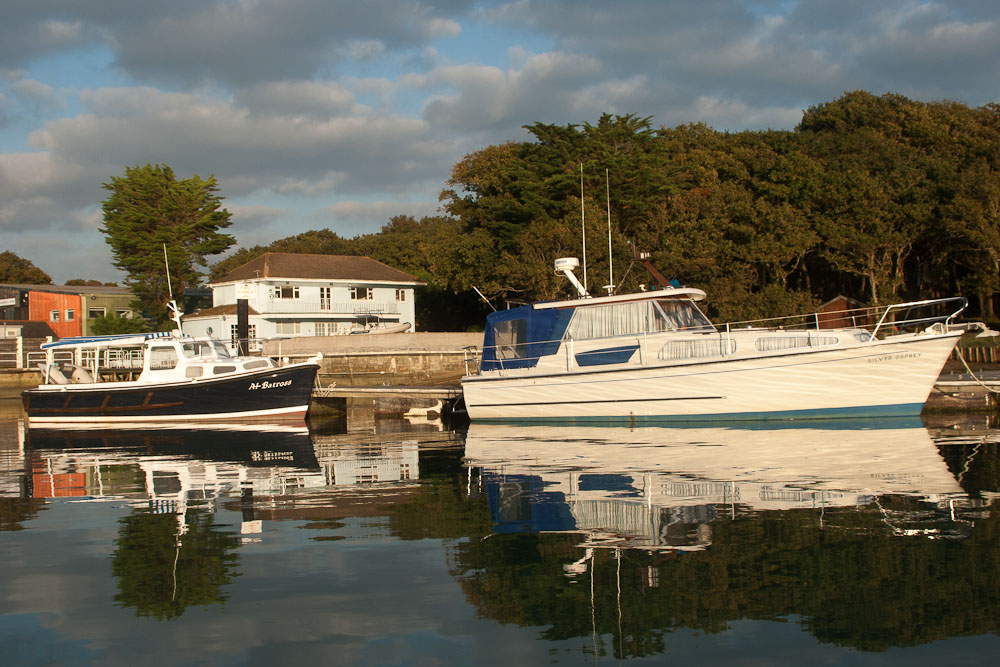In short, Yes you do! ALL vessels must have a passage plan. The law does not specify if you are a commercial vessel or a leisure craft. If you are unfortunate enough to have an accident, failure to have a passage plan will be the first thing on the list for the prosecution. SOLAS V Regulation 34, Safe navigation and hazard avoidance.
So, what is considered to be an acceptable plan?
There is no real format. You are expected to prove that you have researched things such as the current weather forecast, the day’s tides, local VHF Radio channels and crew safety etc.
Here is a checklist example by Steve Schlemmer, aimed at Drascombe day sailers but nevertheless relevant questions to keep in mind when preparing a passage plan.
You can have a Passage plan that you can use, regularly, provided you have updated the day’s tidal heights, tidal set and drift.
The Plan can either be in written form or drawn out.
Example

A written Passage Plan for a vessel on a trip from Torquay towards Brixham.

Passage Plans on an electronic Chart Plotter
Waypoints and routes can be planned using an electronic chart plotter, but remember, in order to achieve the TRACK you have on your plotter, you need to counteract WIND and TIDE.
It is also 'smart' to have other methods to double-check your electronic plan.
"The most reliable instruments on your boat are your 'echo sounder' followed by the MARK ONE EYEBALL!"
Equipment Checklists
Your checklist should cover the boat’s Anchors, Warps, Engine checks, Fuel, Gas, Water, Tools and Spares. You can utilize your checklist as an aide-memoire for yourself or as an introduction/inauguration for new crew members to familiarise themselves with your boat and it’s equipment. Remember, you have a 'Duty of Care' for anyone on your vessel, even if they are family or friends!Let someone know what you’re doing!
Either let a friend or family member know where you are going and the details of your trip. Or, take advantage of the RYA SafeTrx system. SafeTrx is a tracking and alerting system, using smartphone technology. Everyone from Kayakers to Powerboaters can inform HM Coastguard of their plans, Vessel and crew information. Here are some useful links on effective Passage Planning from the Royal Yachting Association: Have you done your passage planning and pilotage? RYA Passage Planning Handbook by Peter ChennellBoating is supposed to be FUN…prepare and enjoy, Dave


